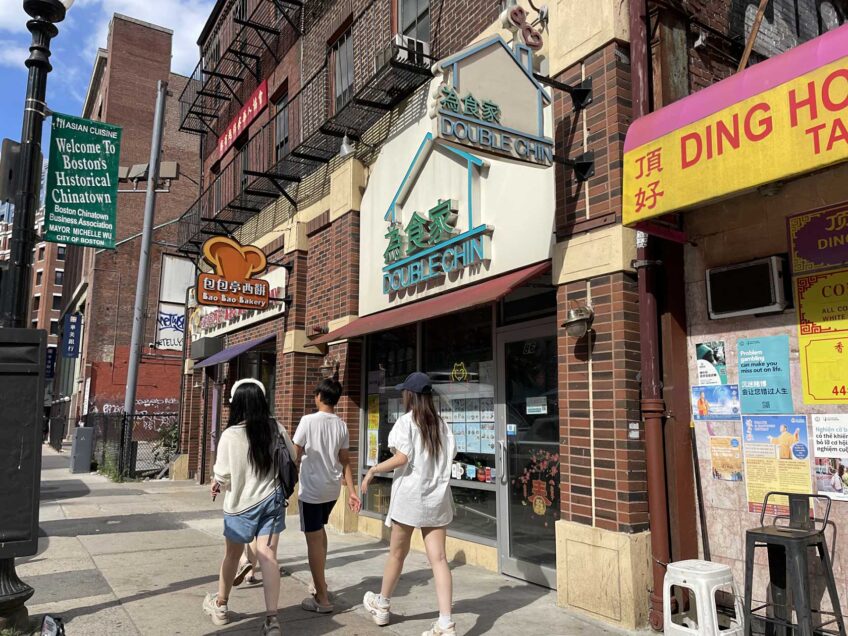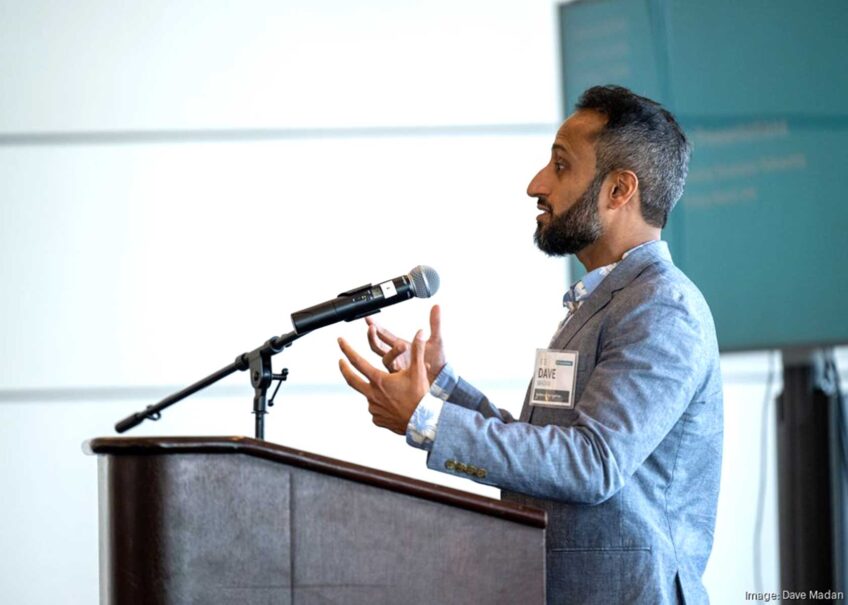Community organizations appeal to Imagine Boston
Coalition’s letter seeks assurances of equality in city planning
A coalition that includes Right to the City, the Boston NAACP, the Chinese Progressive Association and other community organizations and individuals sent a letter to city and Imagine Boston officials in which they sought assurance that Imagine Boston 2030 will not overlook the needs of lower-income neighborhoods or disproportionately aid affluent communities.
“We call on Mayor Walsh to ensure that this vision is one that not only includes but prioritizes those who have been left out of or harmed by an unprecedented period of economic growth
and development,” the coalition wrote in the letter titled “Guiding Principles for Imagine Boston 2030.”
Still in its early stage, Imagine Boston 2030 is the first citywide planning effort in nearly 50 years.
The letter was sent to Mayor Martin Walsh; John Barros, chief of Economic Development; Brian Golden, director of the BRA; Sara Myerson, executive director of Imagine Boston 2030; Daniel Koh, chief of staff; and Joyce Linehan, chief of policy.
As Imagine Boston will not be setting its vision, principles and goals until Fall 2015/Winter 2016, the letter serves as more of a preventative effort and clarion call than a comment on current progress. The citywide plan is a collaboration between the Boston Redevelopment Authority and other groups under the leadership of city-appointed executive director Sara Myerson. It launched in May and emphasizes public involvement as one of its goals.
Public engagement
In its letter, the coalition called for Imagine Boston 2030 to involve elected councils of neighborhood residents in the planning and development processes.
BRA’s director communications, Nick Martin said community engagement will be central.
“The public is key to this process,” said Martin. “The community will be involved at every step of the way.”
“The visions, principles and goals will be determined through a comprehensive community engagement process that begins this fall and continues throughout the planning process,” said Myerson.
One example of that commitment: a survey on Imagine Boston’s website asks visitors to select preferred methods for participating in the planning. By September 4 the survey received 1,255 replies. Myerson said that the majority of responders want to participate through public meetings, small group discussions, email notifications, surveys/polls and a speaker series.
According to Myseron, the Imagine Boston team distributes printed materials at neighborhood events to further raise awareness and connected planning professionals with high school students at an “Imagine Boston 2030 Youth Brainstorm” event to gather ideas.
Martin said that the themes presented by Imagine Boston are just guiding ideas for city development and will change as the community becomes more involved.
“We’ve discussed some principles that we feel could shape the overall plan but … [we] will have meetings in the communities … to see if they [residents] feel the same way, whether language around those principles needs to change, whether new principles need to be added. Principles we’ve put out aren’t hard and fast, just principles to get the conversation started,” he said.
Some coalition members expressed concerns that submitted feedback may have insufficient impact.
Horace Small, executive director of Union of Minority Neighborhoods, said he did not believe that the BRA and Imagine Boston were genuine in their request for public feedback.
“You have to have belief that they [the BRA] actually care, and I don’t believe that,” Small said. “History shows me that they’ve never given squat about what community people care about before, so why now? It’s natural for me to enter this process with a level of skepticism”
“I’m quite clear that they have their plan. … This [request for feedback] is acting to give license to do the things that they want to do.”
Richard Giordano, community organizing director of the Fenway Community Development Corporation, said that in his experience, the BRA had entered planning meetings with a course of action already in mind.
“[The citywide plan] can’t be rolled out with preordained ideas, with them saying ‘Oh gee, this is what we’d like to do here and here and here and we’ll try to sell you on it.’ It should happen the other way around. They should be saying, ‘We have data. We can tell you what’s going on here but we want to hear what you think should be going on here.’”
Giordano also was wary that an agreed-upon plan would see implementation, “The BRA basically sits down after the fact with whatever developmental entity is there and renegotiates everything. … Six-months later the developer comes back, cries, and says we really can’t afford to have 15 or 20 percent affordable housing … and the BRA says, ‘Ok … we’ll let you do 10 less, just give us a million dollars over here.’ That happens all the time.”
Role of the BRA
The coalition members said the city should take responsibilities for planning back from the BRA and deny the BRA urban renewal powers until the organization is reformed.
“Lots of people are saying, ‘Why should we renew the urban renewal powers for 10 yrs before we have a clear and unified vision for the city?’” said Lydia Lowe of the Chinese Progressive Association. She added that it also was unclear why these powers should be renewed if the mayor intends to reform Boston’s development and planning processes.
A critical issue with the BRA’s role is that much of its funding comes from surcharges levied on developers during review processes, said Giordano.
“How could you have a planning department that’s going to plan democratically for what people need when the very existence of the BRA is dependent on money or fees that are charged as part of the review process?” he said.
“Recently with Mayor Walsh’s administration there’s been a verbal commitment to reform the BRA and its culture. We could like to see more action on it,” said Lisette Le of Right to the City.
Martin said the BRA is just one component of Imagine Boston.
“BRA is just one cog in this overall wheel,” he said.
The Department of Neighborhood Development also is involved with Imagine Boston, but only in an advisory capacity. Lisa Pollack, director of media and public relations regarded the project as “spearheaded by the BRA.”
Inequality and a new conversation
“Any city plan needs to have a central focus on keeping working class families and people of color in the city, because we’re facing a displacement crisis,” said Lowe.
The coalition members said that much of Boston’s improvement over the past decade that helped reduce unemployment rates and increase home ownership did not equally benefit communities of color, immigrants and the working class. They called for equality goals to be made integral in all areas Imagine Boston impacts, such as health and economic development, instead of raised as a separate topic. They also sought assurance that public resources be used exclusively for public benefit and neighborhood sustainability and not solely to encourage profits.
Giordano said a new planning approach was needed in which the first step would be to evaluate the social impact of previous developmental efforts, “looking at it through the lens of race and economic justice [and] disparate development” to determine which decisions resulted in desirable outcomes and which should be avoided. Too often planning focused on less vital, though still important, elements such as traffic, parking, streetscape and building height, he said.
Myerson said that housing was a key theme and that the City “will look to develop implementable strategies to responsibly plan for preserving, enhancing and growing Boston by aligning policies and investments to stimulate housing and economic opportunity for all, while promoting environmental sustainability, neighborhood livability and social equity.”
Imagine Boston organizers are taking a more holistic approach to planning, said Martin. That means going forward and not “just on a block by block or neighborhood level but really getting a citywide perspective,” he said. “[The goal is] to spur communication across the city, as opposed to neighborhood by neighborhood.”
Meeting between coalition and city officials
Myerson responded to the coalition’s letter with the offer to hold a meeting with its representatives, Golden and Barros, to discuss the plan and community involvement, said Myerson and Le.
“It would be very helpful to have such a meeting as long as the people running the process have the power to actually implement this kind of thing that we’re talking about [a ground-up and more equitable approach to planning],” said Giordano, “On the other hand, if the people running the meeting already have marching orders, I guess we’ll all have to put our cards on the table and say, ‘What’s going to happen?’ and go from there.”
Le said that the coalition was “looking forward to meeting with the administration” and being part of the planning process.
Imagine Boston expects to present a drafted plan for public review by winter 2017.






